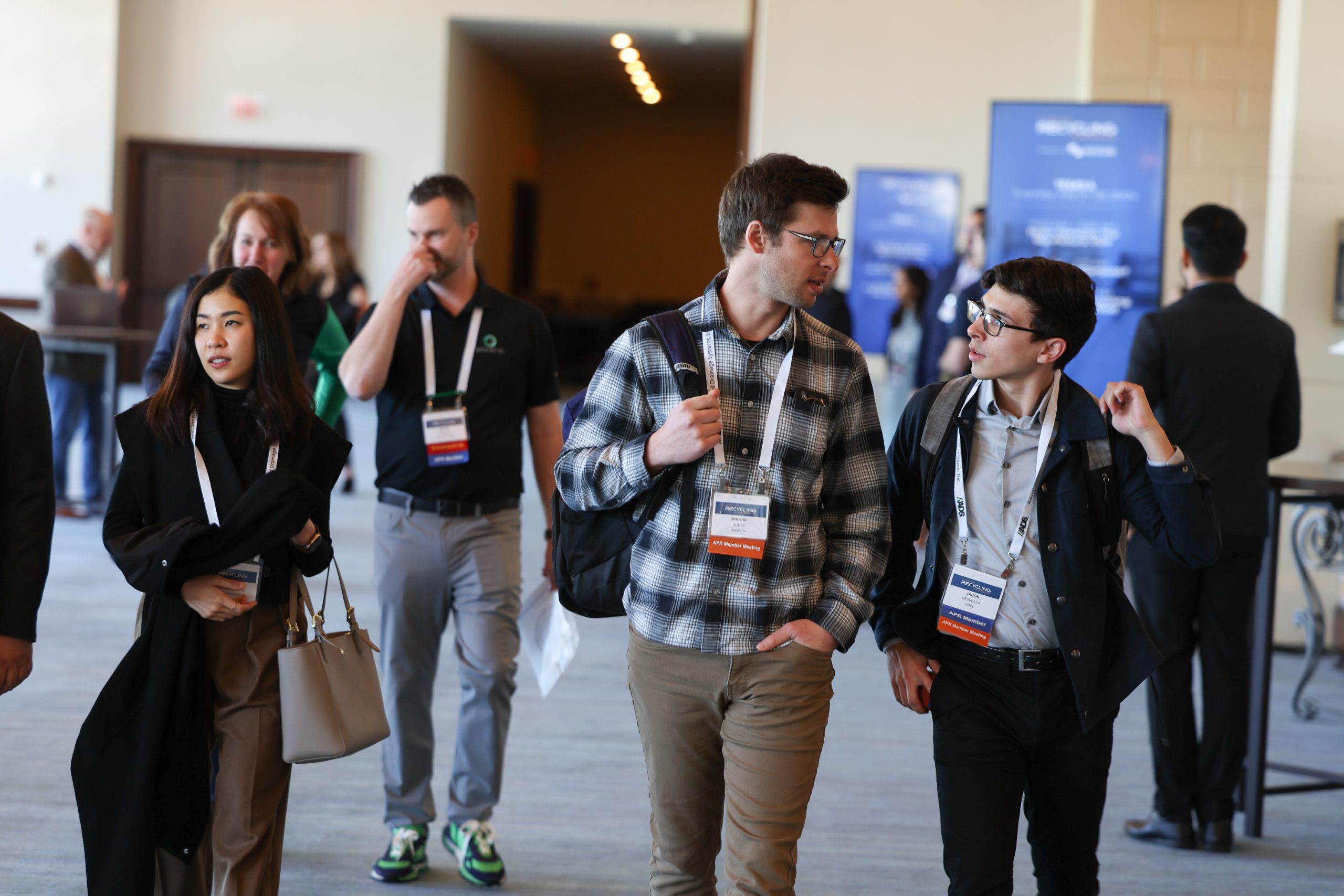
The Association of Plastic Recyclers met following last week’s Plastics Recycling Conference. | Big Wave Productions/Resource Recycling
As Resource Recycling’s annual Plastics Recycling Conference wrapped up last week in Dallas, Steve Alexander, president and CEO of Association of Plastic Recyclers, said an attendee told him the conference painted a less sunny picture than in the past, with sessions focused less on splashy new products and more on industry headwinds like regulation and the resin marketplace.
That was intentional, Alexander told APR members during the organization’s general session that followed the conference. APR owns Resource Recycling Inc., publisher of Plastics Recycling Update, and the trade association played a large role in the event’s planning.
“It is a sobering situation for plastic recyclers right now,” he said. At the same time there were some bright spots – APR had just hit 300 members, for instance, and it continues pushing for post-consumer resin’s greater competitiveness with virgin material.
“We’re going to tell you what’s going on and what we’re working on,” Alexander continued. “We are going to leave no stone unturned to ensure that the plastics recycling industry can grow and thrive.”
Other takeaways from the March 28 meeting included updates on its recent report assessing chemical recycling’s potential role in recycling flexible film packaging, on-the-ground lessons from Seattle and policy trends in the year ahead.
Scaling flexible film recycling
Pyrolysis, a type of chemical recycling, could help dramatically increase the tonnage of plastic bags and other flexible films collected for recycling when combined with other potential policy and industry changes over the next decade, according to an APR study released in March.
Film and flexible packaging is recycled at a remarkably low rate, around 4% in 2019, according to the study. That came to around 500,000 tons of FFP generated that year.
Under an explicitly optimistic scenario of increased residential and retail collection, manufacturers’ switching to more recyclable films and other factors, pyrolysis could help accommodate the collection and recycling of more than 900,000 tons by 2030, APR Program Director Kate Eagles said during the meeting. Pyrolysis can process PP-containing films that aren’t suitable for conventional mechanical recycling, for example.
“The APR supports responsible chemical recycling technologies that complement mechanical recycling by converting post-consumer plastics back into recycled resins for new plastic products,” Alexander wrote in the report’s introduction.
Perspectives from the field
The conference featured relatively few speakers from the local level, APR Chief Policy Officer Kate Bailey said, but those voices are essential for a full understanding of the recycling industry – “we as plastics are one part of a whole system of things,” she said.
Bailey brought Susan Fife-Ferris, the city of Seattle’s solid waste planning and program management director, to the stage to share her insights. Seattle’s recycling program is extensive and well-resourced, Fife-Ferris said, with mandatory recycling participation and food waste collection for all varieties of housing.
Struggles nevertheless persist, including in multifamily collection and hauling companies’ lack of transparency with their data. Plastics draw a lot of attention and concern from local residents as well. Fife-Ferris urged APR members to participate in their states’ recycling conferences, talk to their city councils and bring in recycling program representatives from around the host cities of future conferences.
“Policies are only as good as the knowledge that goes in behind them,” she said.
Looking ahead
Finally, Bailey turned to the legislative landscape across the country. APR is focused on improving market demand for PCR and offering assistance in compliance, education and other regulatory concerns.
In general, a few states like California and Oregon are leading the way in EPR, deposit programs, recyclability designations and other areas, Bailey said.
This could build national momentum or spark conflicts among the states, both of which could inspire federal legislation. Legislators at the state and federal level seem more open to EPR than they are to deposit bills, Bailey added. But as far as APR is concerned, both approaches could be good news.
“This is going to unlock hopefully more collection, stronger demand,” Bailey said. “If it gets us more clean supply, that is what we want.”

